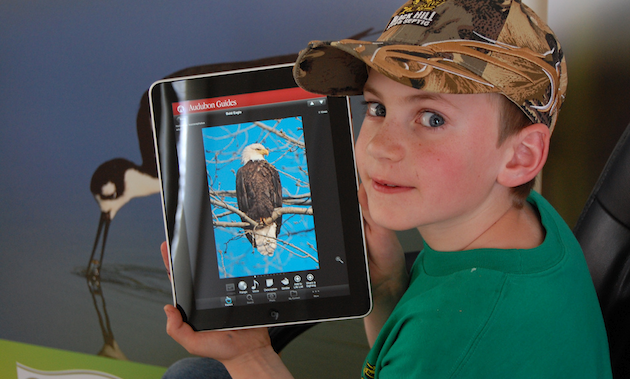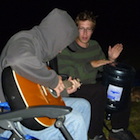Respecting musical intelligence in teaching kids
Part 4 of 6 in a series featuring Canada's Smartest Person contestant Marshall Carroll

Kids will always take delight in their natural surroundings. Giving them different activities related to those surroundings as a way of helping them to learn just makes it more enjoyable all around. Just ask one of Canada’s smartest people.
Marshall Carroll of Winnipeg, Manitoba, is a high school chemistry teacher and part-time university chemistry professor who recently appeared on CBC’s Canada’s Smartest Person. Having used the technique of respecting multiple intelligences himself in his teaching career, Carroll knows firsthand that the more you tap into those many different levels of intelligence that exist, the better kids will learn and the more fun they’ll have doing it.
Kids can excel in logical, physical, visual, linguistic, musical or social intelligence. It’s a theory that Carroll himself believes in, and one he applies everyday when looking to engage his student’s.
“Today’s high-tech world means kids are now inundated with a lot of information, the majority of which comes from a device they either hold in their hands or sit directly in front of,” said Carroll. “So unless you can grab their attention in a new and unique way, the odds of them being fully involved in the discovery process, like you might have been as a child out camping, has drastically changed. The trick to fostering that discovery process is to understand how your child learns or takes information in, and then to come up with fun activities that engage them in that manner.”
Musical intelligence
Music is something that exists in abundance in nature. From birds calling to crickets chirping, brooks babbling and leaves rustling, the sounds are there for the listening if you only but stop and take the time.
Use apps supplied by the Audubon Society that has the songs of birds and digital photos said Carroll. This allows you to play a bird call, listen to a real bird and then try and match it.
“Or like one of the challenges we played on Canada’s Smartest Person, listen and identify the birds in the area, and when one stops, try and figure out which one has stopped,” said Carroll.
Carroll even has an idea that can make listening for crickets a fun and interesting way to tell the surrounding outside temperature.
“Listen to a cricket chirping for 14 seconds,” said Carroll, “and count the number of times they chirp in that period. Then simply add the number 40 to it and that’s the temperature that it is in Fahrenheit. Convert it to Celsius and then check a thermometer to see if you’re right, or how close you came.”
Kids can also learn about sound waves and how they travel through different mediums from a fence to the ground and even across water. Do they travel faster or slower through mediums other than air? And what’s the difference between the sounds you hear at night and in the day?
There are lots of ways to utilize music and tap into kids’ creativity when camping, not the least of which includes simply sitting around a campfire and singing some traditional campfire songs. And if you can throw in a little accompaniment—whether through actual instruments you bring from home or some fun instruments you make or re-purpose yourselves out of things you find—all the better. And don’t forget to dance to the beat of that homemade drum!








